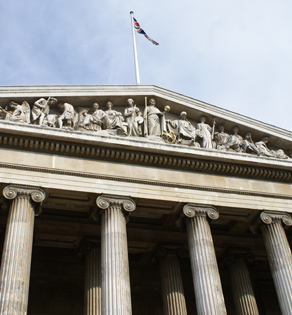The treasures of the Egyptian boy pharaoh Tutankhamun’s tomb are priceless. When they went on show at the British Museum in central London in 1972, it was the event of the year as hundreds of thousands visited, and the queues stretched around the outside of the building. The international implications of theft, damage or simply mishap to the contents would be immeasurable, as the authorities admitted in the file Mepo 26/3, now kept at the National Archives at Kew.
As a sign of how long it takes to bring such prestigious exhibitions together, the file’s first note dates from November 1969. Police pointed out that while at first sight it was an inter-cultural loan of state treasures, ‘for which we normally provide escort free of charge’, it was however a ‘commercial venture sponsored by The Times newspaper and with a substantial admission charge’. In other words police were wondering whether to ask for a ‘sepcial service charge’ for an escort. But, it turned out that proceeds were going to the United Nations cultural body Unesco and by November 1971 police agreed not to charge.
A letter of Feb 1, 1973 described how the treasures would leave the museum for their return to Egypt. A van would leave at 3am. Also in the convoy would be a Hilman Avenger with a British Museum driver; and a Ford Granada with a driver from the shipping company. The escort to Heathrow would be, by way of the M4 airport spur, by a police car and two motorcyclists. The British Airports Authority Police based at Heathrow were asked by the Met Police to meet the convoy at the airport entrance at 345am, and escort it to the BOAC airline cargo terminal, for loading on to an aircraft due to leave at 7am. The Met Police would only leave when the convoy was in the terminal. The route was as you might expect from the museum west: Euston Road, to Edgware Road, Marble Arch, Park Lane, Hyde Park Corner, Knightsbridge, and the Hammersmith fly-over.
Another letter dated the same day to Thames Valley Police was about exhibits returning to Egypt via an RAF aircraft, from RAF Abingdon; that is, inside the Thames Valley force area, on the Sunday, February 4. Those exhibits would be in a grey van, accompanied by a man from the shipping company in a red Jaguar. The Met again would provide a car and two motorcyclists as an escort, leaving at 7am on Sunday. Thames Valley were asked to take over the escort at the Denham roundabout on the A40, at about 7.45am. That cargo’s route was from the museum to Euston Road, Marylebone Road, and Westway to the A40. Another car would be stationed in the forecourt of the museum as liaison between the police and museum officials manning the museum security control. Radio traffic would be kept to a minimum, said the confidential instructions, ‘and the words British Museum and Tutankhamun are not to be used’, presumably a nod to the risk that radio broadcasts could be intercepted.
Part two: an unhappy visitor from Hemel Hempstead.










